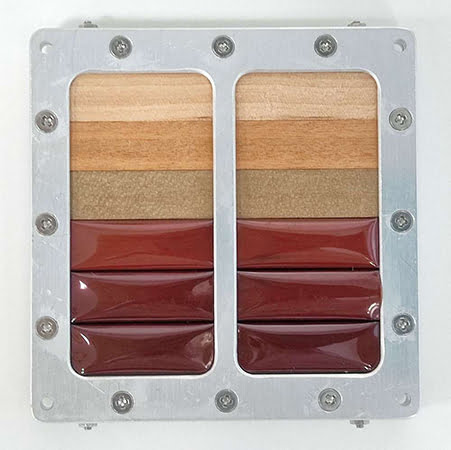Japanese researchers have created a miniature satellite called LignoSat, crafted from magnolia timber. This wooden satellite is designed to safely disintegrate into ash upon re-entering the Earth’s atmosphere. This environmentally friendly satellite has been created to combat harmful aluminum particles and debris in space set to launch by NASA in the summer.
Researchers at Kyoto University, in collaboration with the logging company Sumitomo Forestry, constructed this satellite to explore the concept of using biodegradable materials like wood to tackle the issue of space pollution. During an experiment on the International Space Station (ISS), magnolia wood was discovered to be stable and resistant to cracking, indicating that it can serve as an alternative to the metals used in the construction of all satellites at present.
When satellites re-enter Earth’s atmosphere, they burn up and produce tiny alumina particles. These particles float in the upper atmosphere for many years, ultimately impacting the Earth’s environment.
Material Selection for Wooden Satellite
Researchers in Kyoto University initiated a project to assess various types of wood, aiming to determine their resilience to the challenges of space launch and extended orbits around Earth. Initial tests occurred in laboratories simulating space conditions, revealing that wood samples exhibited no significant changes in mass or signs of decomposition or damage.
Following these laboratory tests, samples were dispatched to the International Space Station (ISS) for exposure trials lasting almost a year before being returned to Earth. The study encompassed several wood types, among which magnolia wood demonstrated the highest durability, outperforming others, including Japanese cherry wood.

More About LignoSat
The satellite, approximately the size of a coffee mug, is anticipated to function in space for a minimum of six months before being permitted to enter the Earth’s upper atmosphere and burn out.
The objective of the Mission
One of the satellite’s goals is to study how the wooden structure reacts in space. While wood is strong and stable in one direction, it might experience changes and cracks in another direction. If LignoSat performs effectively during its time in orbit, it could pave the way for using wood as a material for building more satellites.
Read also Indian Space startup building fuel station in Space!


